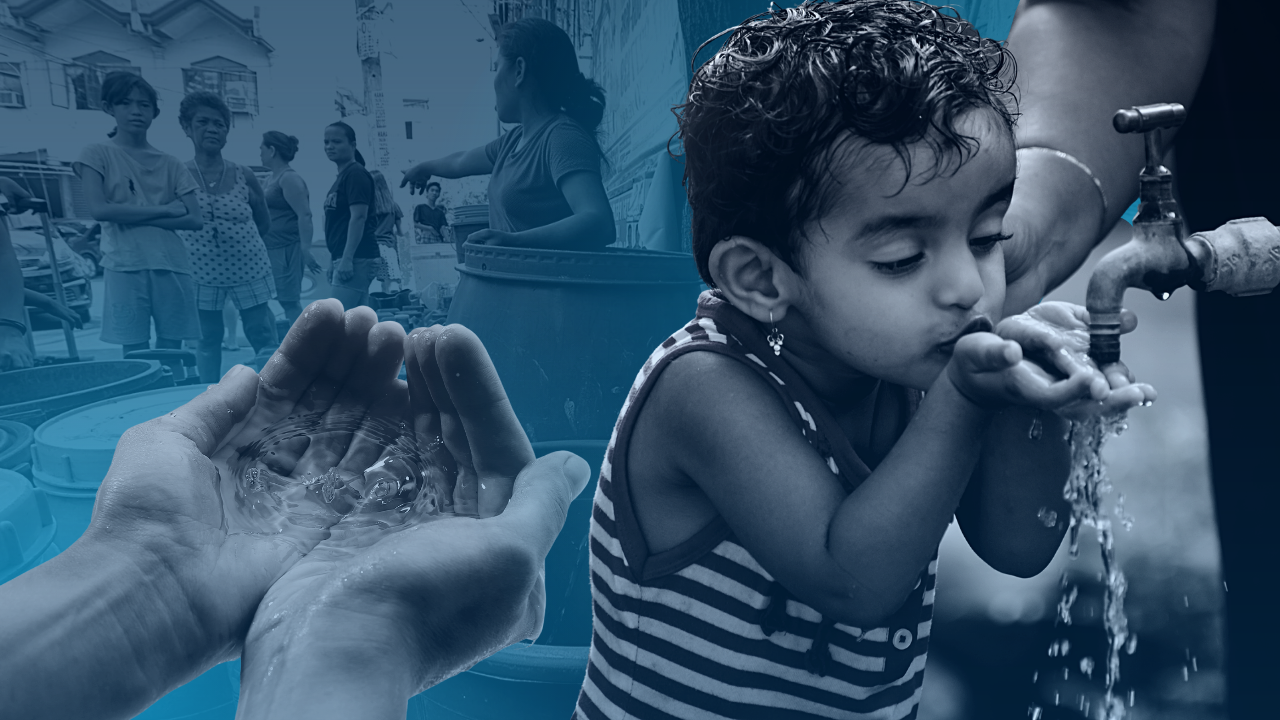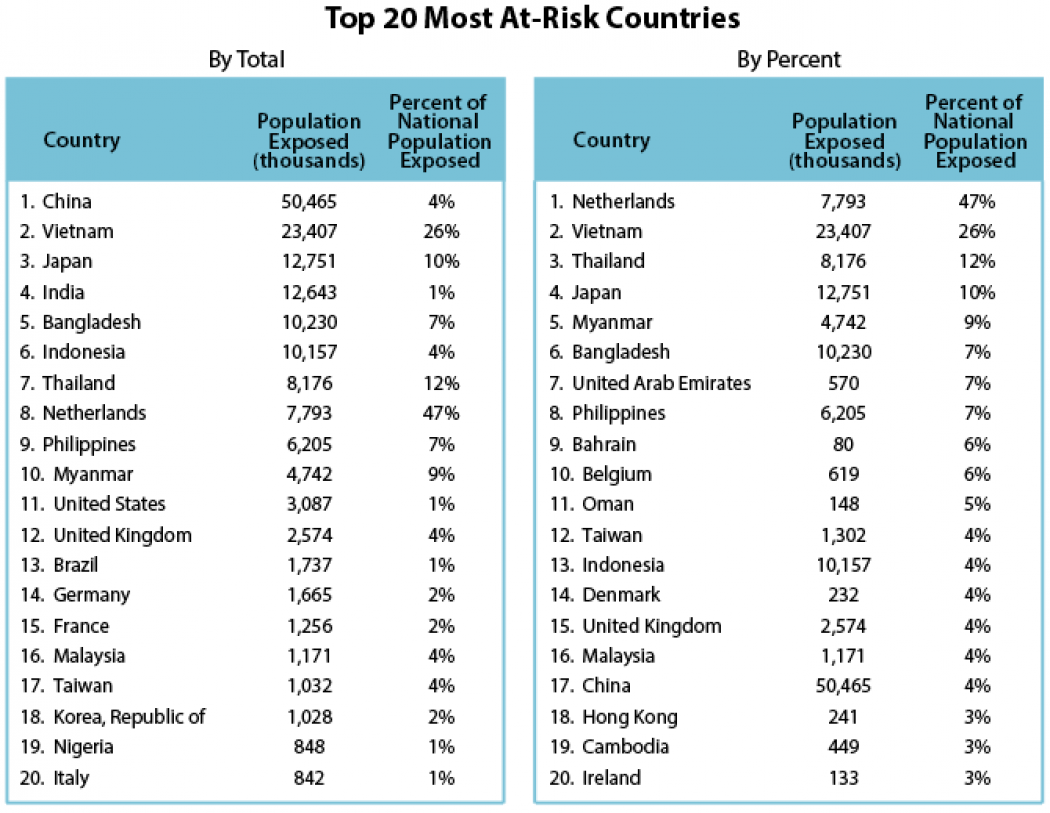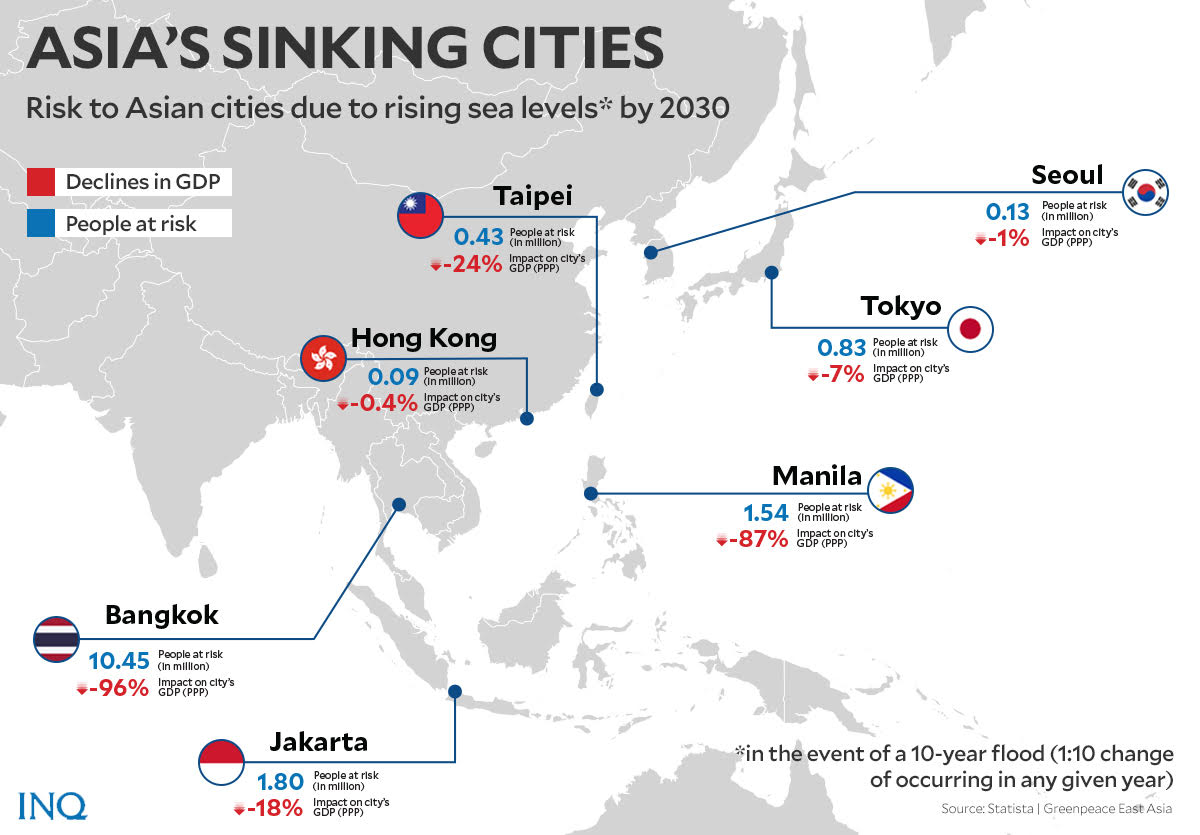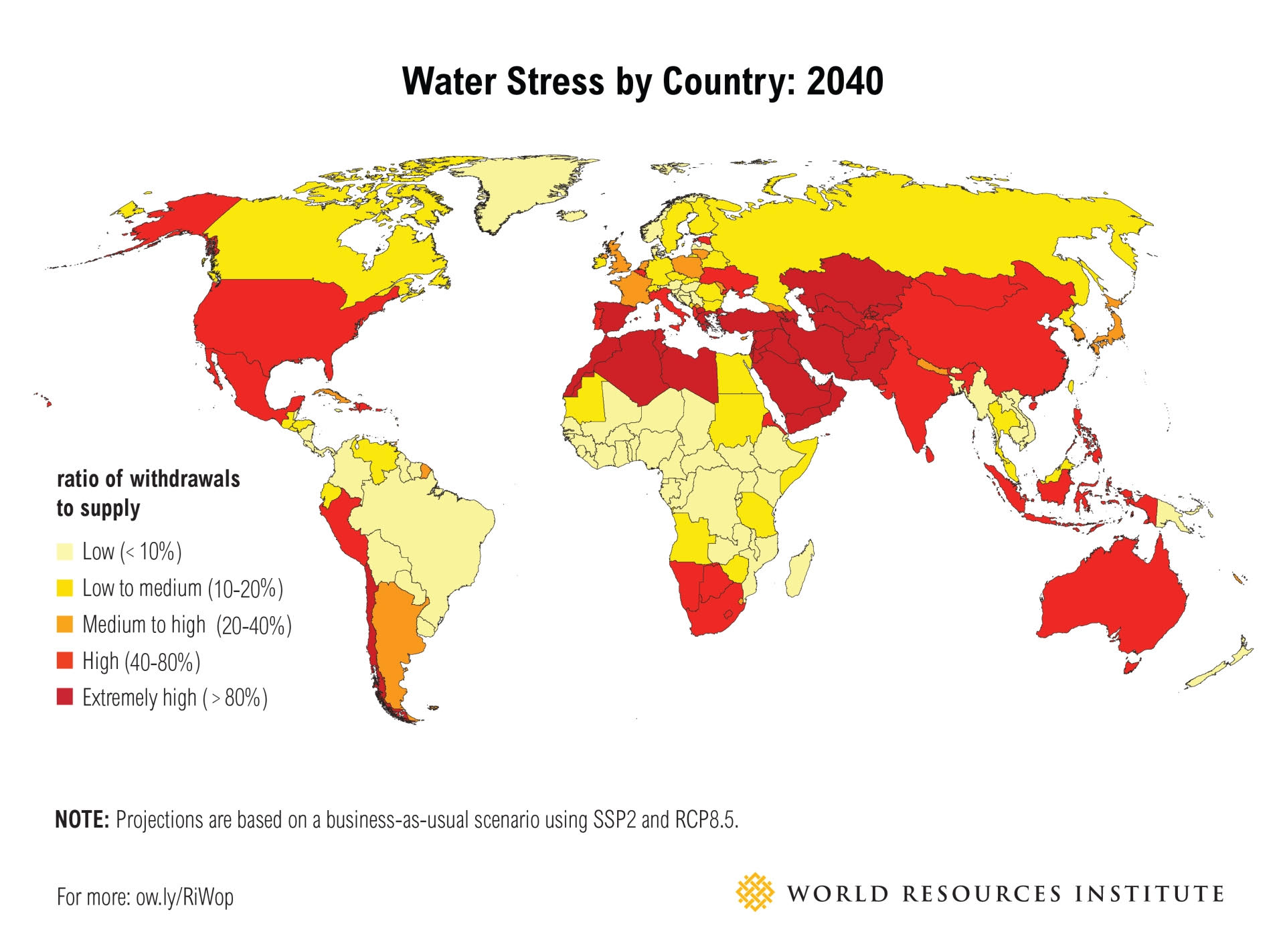Rising water stress: Water sources dry up, flood risks rise
MANILA, Philippines—On March 22, as the world observed World Water Day, an alarming report was highlighted—rising water stress globally.
World Water Day was meant to celebrate water as source of life and raise awareness on the millions of people around the world who have no access at all to safe water.
Water stress, also known as water scarcity, occurs when demand for safe, usable water exceeds supply.
According to the United Nations (UN), a place can be considered as “water-stressed” when it draws 25 percent or more of its freshwater resource.
A report by consumer company Statista noted that across the world, only 18.4 percent of total renewable freshwater resources were withdrawn in 2018.
Article continues after this advertisement“Regionally though, there are already places experiencing serious issues. Northern Africa has critical water stress levels, while Central and Southern Asia were classed as having high water stress,” said Martin Armstrong, data journalist at Statista.
Article continues after this advertisement“On the other end of the scale, 31 percent of the global population remained at the ‘no stress’ level,” Armstrong added.
READ: Where Water Stress Will Be Highest by 2040
Projections by the World Resources Institute (WRI) painted a more dire future, which indicated that the problem with water stress has already become more widespread and will continue to affect more countries by 2040.
Water stress levels on the rise
According to WRI, as years go by, climate change, economic development, urbanization, and population growth will impact water demand and availability.
To help the world prepare for such changes, WRI said future scenarios of global water supply and demand should be considered by decision-makers.
“Investors, policymakers, companies, and development organizations can use such projected estimates to quantify the future impact, hedge risks, and adapt to changes at relevant scales,” the report stated.
“For certain decisions and analysis, the national scale may be important, and to the best of our knowledge, no up-to-date, country-level projections currently exist in the public domain,” it added.
The WRI’s Aqueduct Water Stress Projections, which ranked countries across the world based on the expected water level stress by the year 2040, followed the aqueduct water stress thresholds.
For each of the five categories, a specific score was assigned which constitutes the ratio of a country’s water withdrawal to available water in 2040.
The thresholds were:
- Category: Low; Score: 0-1; Ratio of withdrawals to available water: <10%
- Category: Low to medium; Score: 1-2; Ratio of withdrawals to available water: 10-20%
- Category: Medium to high; Score: 2-3; Ratio of withdrawals to available water: 20-40%
- Category: High; Score: 3-4; Ratio of withdrawals to available water: 40-80%
- Category: Extremely high; Score: 4-5; Ratio of withdrawals to available water: >80%
Based on the said threshold, WRI’s analysis showed that 33 out of 161 countries would have extremely high water stress levels by 2040 under a “business-as-usual” scenario—or if no mitigation policies or measures were implemented beyond those that are already in place or no legislation or new plans are adopted.
Among the frontrunners, all of which had a score of 5, which means that the countries would have a ratio of withdrawals to available water that is higher than 80 percent, were Bahrain, Kuwait, Qatar, San Marino, Singapore, United Arab Emirates (UAE) and Palestine.
The Philippines sat at rank 57 with a 3.01 high water stress level score. Meaning, at least 40 percent to 80 percent of the country’s total water supply would have been already withdrawn, or gone, by 2040.
The WRI noted that the indicators should not be seen as predictions, but rather as potential outcomes under specific climate and socio-economic trajectories that are subject to uncertainties.
It also clarified that the indicators do not account for existing governance and investment in the water sector.
“These country-level water stress projections are intended to provide useful information about potential future water situations that can help drive improved water management at the international scale,” WRI said.
“We hope that these datasets, which take into account the relative impact of climate and socio-economic changes on water availability, can help international organizations, businesses, and financial institutions to take steps to mitigate risks and more effectively adapt to plausible future climate change and water demand scenarios,” it added.
Addressing the problem
Policy decisions required to reverse water stress—such as setting withdrawal caps, encouraging wastewater treatment, and establishing pricing schemes—primarily take place at an administrative scale, such as at a country, state, or provincial level.
Water stress, according to WRI, can be reduced by measures “ranging from common sense to cutting-edge.” While there are many possible solutions to the issue, the WRI suggested three of the “most straightforward” solutions to reduce water stress.
The first suggestion was to increase agricultural efficiency, which could be possible if farmers will use seeds that require less water. This way, every drop of water goes further into food systems.
The WRI also recommended improving irrigation techniques by using precision watering rather than flooding the fields.
“Financiers can provide capital for water productivity investments, while engineers can develop technologies that improve efficiency in agriculture,” WRI said.
“And consumers can reduce food loss and waste, which uses one-quarter of all agricultural water,” it added.
The WRI, citing previous research done by the World Bank, also advised policymakers to consider investing in “gray and green infrastructure.”
Both the WRI and the World Bank suggested that built infrastructure such as pipes and treatment plans could merge with green infrastructures such as wetlands and healthy watersheds to tackle issues of both water supply and water quality.
Lastly, WRI reminded the public to treat, reuse, and recycle water.
“We need to stop thinking of wastewater as waste. Treating and reusing it creates a ‘new’ water source. There are also useful resources in wastewater that can be harvested to help lower water treatment costs” the WRI said.
“The data is clear: There are undeniably worrying trends in water. But by taking action now and investing in better management, we can solve water issues for the good of people, economies, and the planet.”
Submerged cities
Aside from future threats of “extremely high” and “high” water stress levels in many parts of the world, a report by The Economist likewise shed a light on the grim issue of rising sea levels—which experts discovered could submerge several cities or countries years from now.
“At the same time, rising sea levels place a growing number of geographies, particularly in East and South-east Asia, at a higher risk of flooding, which can overwhelm sanitation systems and pollute drinkable water sources,” the report said.
READ: World Water Day: Water and sanitation in PH
A 2014 research report by Climate Central—a nonprofit news organization that analyzes and reports on climate science—showed that among the top 10 countries that were found to be at most risk of coastal flooding were:
- China: 50,465,000 people affected or 4 percent of its total population as of 2014
- Vietnam: 23,407,000 people affected or 26 percent of its total population as of 2014
- Japan: 12,751,000 people affected or 10 percent of its total population as of 2014
- India: 12,643,000 people affected or 1 percent of its total population as of 2014
- Bangladesh: 10,230,000 people affected or 7 percent of its total population as of 2014
- Indonesia: 10,157,000 people affected or 4 percent of its total population as of 2014
- Thailand: 8,176,000 or 12 percent of its total population as of 2014
- Netherlands: 7,793,000 or 47 percent of its total population as of 2014
- Philippines: 6,205,000 or 7 percent of its total population as of 2014
- Myanmar: 4,742,000 or 9 percent of its total population as of 2014
A separate report by Greenpeace East Asia revealed last year that seven Asian cities are at risk of turning into water worlds because of extreme weather changes in 2030 including:
- Bangkok, Thailand
- Jakarta, Indonesia
- Manila, Philippines
- Tokyo, Japan
- Taipei, Taiwan
- Seoul, South Korea
- Hong Kong



